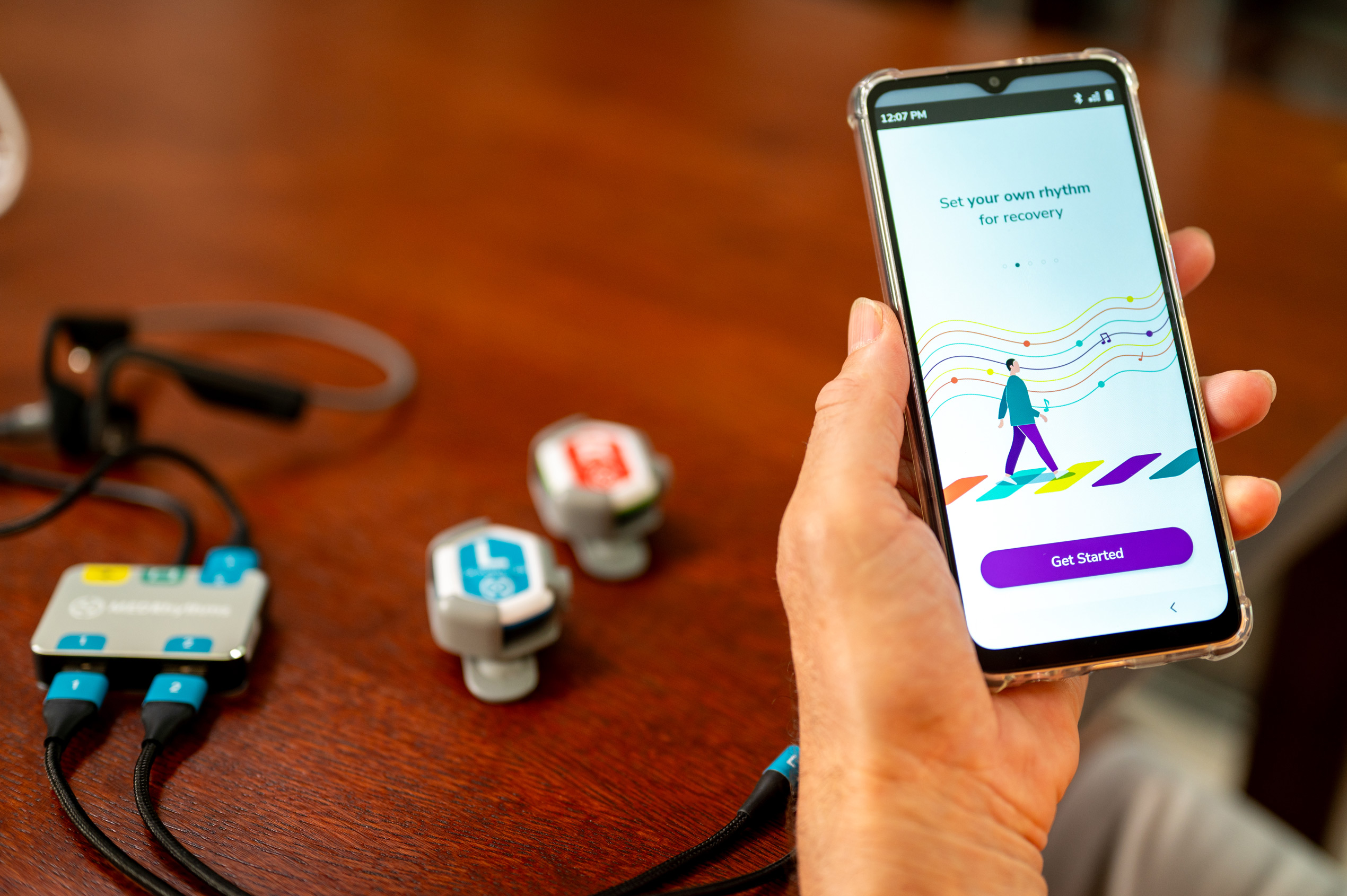
A digital therapy that uses rhythm and music to help people relearn how to walk after a neurological diagnosis is commercially available by prescription after being cleared by the US Food and Drug Administration (FDA) in 2023.
With the InTandem system, patients can choose a song from Universal Musical Group’s giant catalog and practice walking following a stroke or Parkinson’s diagnosis—which can affect gait patterns. InTandem’s algorithm selects a tempo based on the patient’s gait pattern and adjusts that tempo based on how well a patient keeps pace. This is good news for the nearly 800,000 Americans who have a stroke each year, many of whom experience difficulty walking afterward. The research, development, and clinical trials for InTandem were led by Sargent’s Neuromotor Recovery Lab, in collaboration with clinics across the country. Lab director Lou Awad, an associate professor of physical therapy, is encouraged by the results he’s seeing and the speed with which InTandem has reached the market—less than 10 years.
“A large part of this success has been an academic–industry partnership that combines a shared mission with the unique talents and skills of each group,” says Awad, a clinical and scientific advisor for MedRhythms, the Portland, Maine–based company that created InTandem.
A 2023 clinical trial, whose results were published in the journal Neurorehabilitation and Neural Repair, showed that even a single gait training session with an InTandem research prototype helped stroke survivors with a chronic walking impairment walk about 20 percent more symmetrically and 40 percent more efficiently. “These are major changes that are rare to see after multiweek gait training programs, let alone a single gait training session, which was very encouraging,” Awad says.
A large part of this success has been an academic–industry partnership that combines a shared mission with the unique talents and skills of each group.
—Lou Awad
Then, in early 2024, Awad’s team published in Nature Communications the findings of a multisite, randomized controlled trial that evaluated the effects of the InTandem system relative to a treatment-matched active control group. The study, which enrolled more than 80 stroke survivors, evaluated efficacy and safety, Awad says. Some clinicians have expressed worry about an increased risk of patients falling as they walk faster, he says, but the 2024 trial revealed fewer falls among patients using InTandem than those in the control group. “This important finding is likely because the InTandem intervention considers a patient’s walking quality while it works to increase walking speed,” Awad adds.
In July 2023, InTandem was listed as a Class II medical device with the FDA, clearing the way for MedRhythms to officially launch the technology as a prescription-only product on October 16, 2023. Awad says he and his colleagues continue to study InTandem, evaluating treatment duration, the reasons some patients respond more than others, and the long-term effects on health and quality of life.
But for now, he’s thrilled to see InTandem leave the research lab and help many of its users. He says doctors are writing prescriptions and insurance companies are covering InTandem.
“Insurance coverage usually takes a very long time; that insurance companies are paying for InTandem is a testament to the product and the clinical evidence available to support it,” Awad says. “And the unique collaboration between the Neuromotor Recovery Lab and MedRhythms is a big reason for that.”